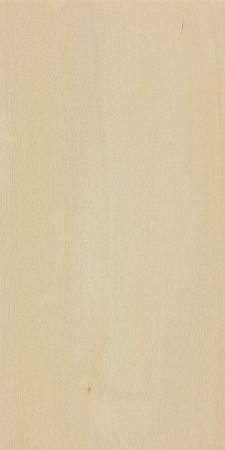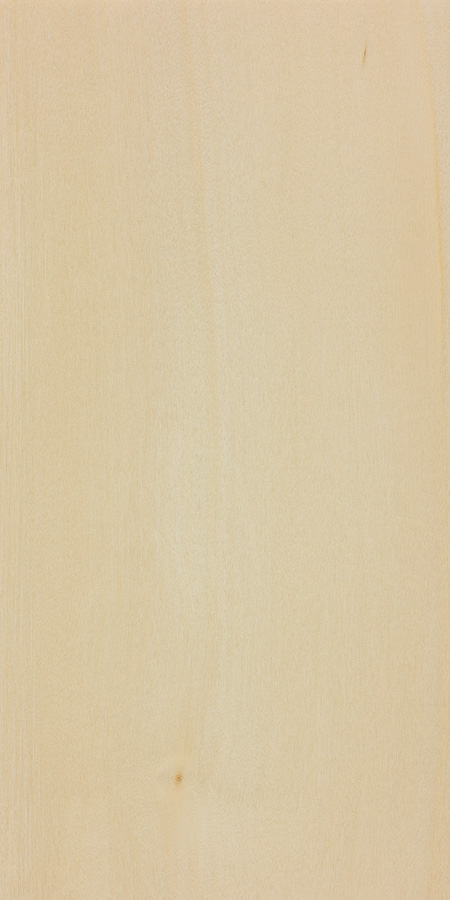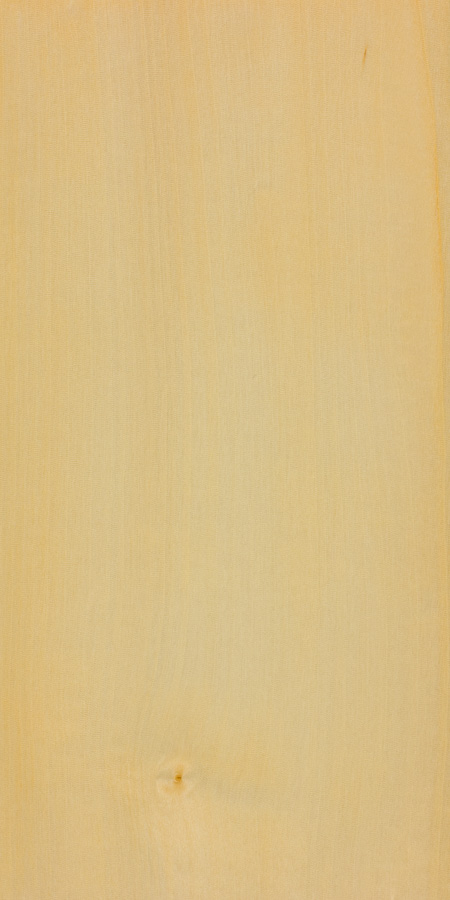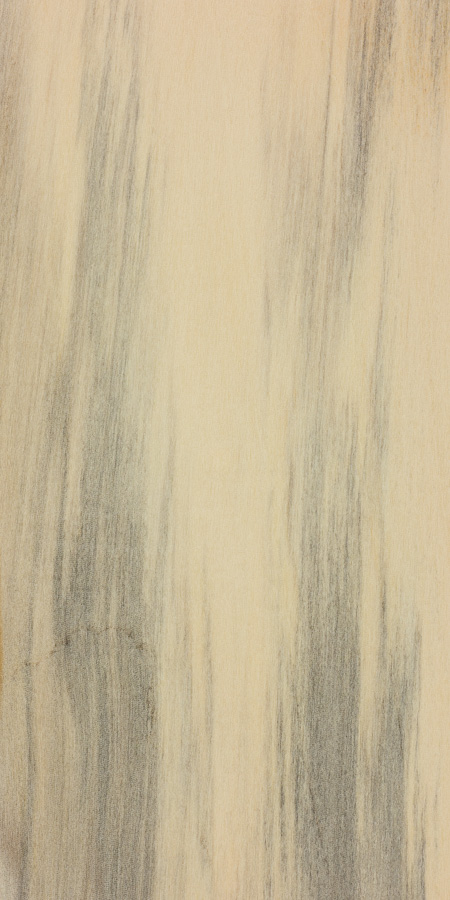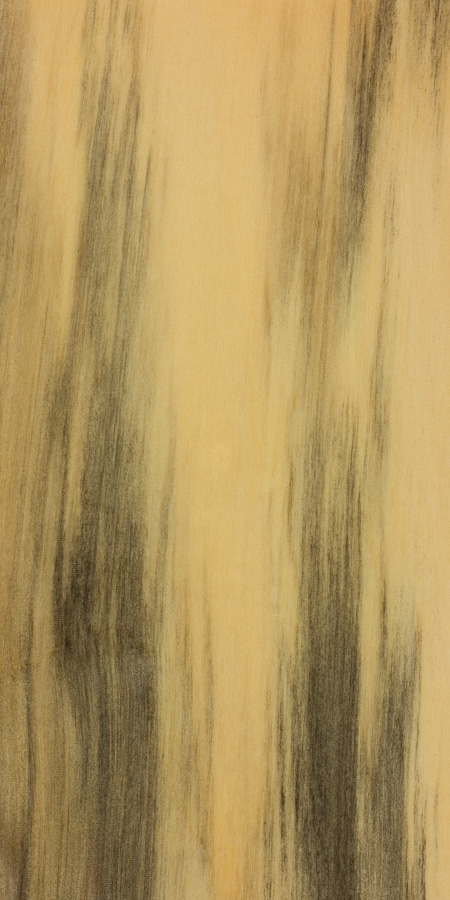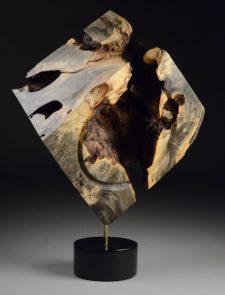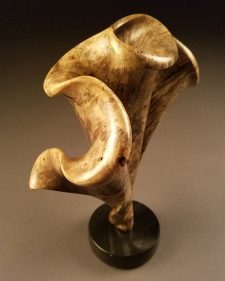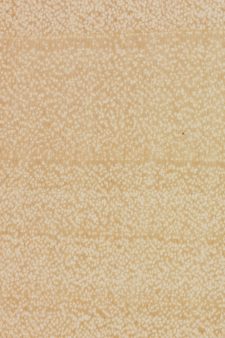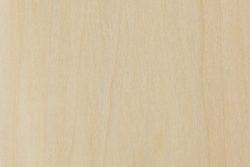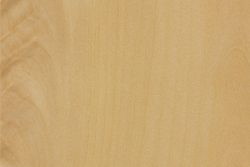> Hardwoods > Sapindaceae > Aesculus > glabra
Common Name(s): Ohio buckeye, stinking buckeye
Scientific Name: Aesculus glabra
Distribution: Midwest and eastern United States
Tree Size: 50-75 ft (15-23 m) tall,
1-1.5 ft (.3-.5 m) trunk diameter
Average Dried Weight: 32.5 lbs/ft3 (520 kg/m3)
Specific Gravity (Basic, 12% MC): .44, .52
Janka Hardness: 770 lbf (3,430 N)*
*Estimated hardness based on specific gravity
Modulus of Rupture: No data available
Elastic Modulus: No data available
Crushing Strength: No data available
Shrinkage: No data available
Color/Appearance: Heartwood is creamy white or light yellow, not clearly demarcated from the white sapwood. Can have grayish streaks. Buckeye burl can feature reddish brown knots, with light to dark gray swirls of discoloring (see pictures below).
Grain/Texture: Buckeye has a fine, even texture. Grain tends to be straight or slightly interlocked.
Rot Resistance: Buckeye has poor decay resistance, and is rated as non-durable to perishable.
Workability: Buckeye is generally easy to work, but its unusually low density can lead to fuzzy surfaces, similar to aspen or cottonwood. Responds poorly to steam bending. Glues and finishes well.
Odor: Buckeye can have an unpleasant smell when green, which greatly subsides upon drying.
Allergies/Toxicity: Besides the standard health risks associated with any type of wood dust, no further health reactions have been associated with buckeye. See the articles Wood Allergies and Toxicity and Wood Dust Safety for more information.
Pricing/Availability: Not typically used for lumber due to its low density and strength, Buckeye can sometimes be found in board form, and should be comparable to aspen or basswood. Burls are more valuable and are sold for smaller specialty purposes.
Sustainability: This wood species is not listed in the CITES Appendices or on the IUCN Red List of Threatened Species.
Common Uses: Furniture, utility wood, boxes/crates, pulpwood; while the burl sections are used for electric guitar tops, pen blanks, and other small, specialty turned objects.
Comments: The state tree of Ohio, the very term “buckeye” has simply come to mean any person from Ohio, and is even used in Ohio’s college-level sports teams. The name comes from the appearance of the tree’s nuts, which are a dark brown with a lighter-colored spot, resembling the eye of a buck. The tree is sometimes called stinking or fetid buckeye for the unpleasant odor of the foliage when crushed.
The wood itself is fairly soft and lightweight—though not as soft as yellow buckeye (Aesculus flava). It’s low strength and bland appearance limit it to basic utility purposes. The burl sections of buckeye are much more prized, and their light-on-dark knot clusters, and unique, almost black discolorations make them sought after for a variety of specialty and hobbyist applications.
Images: Drag the slider up/down to toggle between raw and finished wood. The second sample pictured below represents a piece of buckeye that is mineral-stained. A special thanks to Salem Barker for providing the sculpture photos of this wood species.
Identification: See the article on Hardwood Anatomy for definitions of endgrain features.
Porosity: diffuse porous
Arrangement: solitary and radial multiples
Vessels: small, very numerous
Parenchyma: marginal
Rays: narrow, normal to close spacing
Lookalikes/Substitutes: When used for utility lumber, buckeye can be mixed with aspen (Populus spp.), basswood (Tilia americana), and yellow poplar (Liriodendron tulipifera). Two other woods that are very similar anatomically are tupelo (Nyssa sylvatica) and sweetgum (Liquidambar styraciflua).
Notes: Ohio buckeye generally lacks consistent ripple marks on flatsawn surfaces, while they are prevlanet in yellow buckeye (Aesculus flava).
Related Content:

